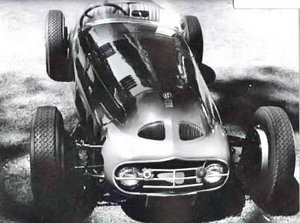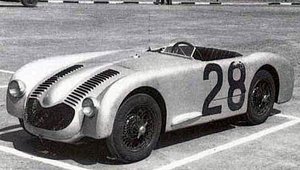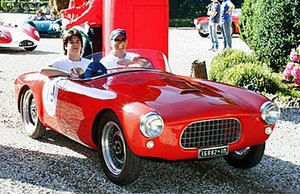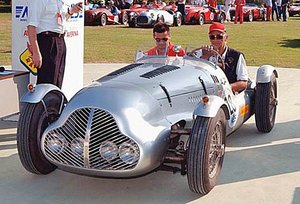Difference between revisions of "Nardi"
m |
m |
||
| Line 9: | Line 9: | ||
These were usually unique, almost always used a tubular chassis and Fiat derived front and rear suspension, and were powered by various engines, frequently 750cc BMW motorbike units, but including items from Alfa Romeo (6C2500 units), Fiat (1100) and Lancia (Aurelia) as well as non-Italian units (Crosley 750's). Bodies were constructed by various carrozzeria, including [[Bertone]], [[Allemano]], [[Frua]] and [[Motto]]. | These were usually unique, almost always used a tubular chassis and Fiat derived front and rear suspension, and were powered by various engines, frequently 750cc BMW motorbike units, but including items from Alfa Romeo (6C2500 units), Fiat (1100) and Lancia (Aurelia) as well as non-Italian units (Crosley 750's). Bodies were constructed by various carrozzeria, including [[Bertone]], [[Allemano]], [[Frua]] and [[Motto]]. | ||
| + | |||
| + | [[Image:3d12_1.jpg|thumb|300px|right|'''The photo shows one of three 1948 series N-D Alfa Romeo cars that are known to remain today even if it is presumed that at least one more probably survives. Nardi-Danese production alternated between these Alfa Romeo powered cars in this "Marco" style, along with two additional Alfa Romeo powered coupe and other smaller cars that had BMW motorcycle engines. At least two additional cars were built 1948, derived from the "Marco" style, one using a Fiat 1100 engine and the other using a prewar Maserati 4CS-1500 engine.''']] | ||
| + | |||
Nardi Danese 2500 [[Sport]] Notable was also the 'Bisiluro' which competed unsuccessfully at [[Le Mans]] in 1955. A twin-boom vehicle, the pilot was seated in one 'pod' whilst the Giannini 750cc engine was located in the other. This proved, however, to be effectively the end of car production, with a few exceptions including a couple of [[Lancia Aurelia]] based [[concept cars]] in 1955. | Nardi Danese 2500 [[Sport]] Notable was also the 'Bisiluro' which competed unsuccessfully at [[Le Mans]] in 1955. A twin-boom vehicle, the pilot was seated in one 'pod' whilst the Giannini 750cc engine was located in the other. This proved, however, to be effectively the end of car production, with a few exceptions including a couple of [[Lancia Aurelia]] based [[concept cars]] in 1955. | ||
Revision as of 10:21, 25 December 2008
Nardi Danese (1947) Following a one off race car built in 1932 (capable of 180km/h with a 65bhp JAP 998cc two-cylinder air-cooled vee engine!), Enrico Nardi worked for a period first for Lancia and then Ferrari, where he helped create the AAC 815. From 1947 he teamed up with Ricardo Danese as a business partner (hence the use, sometimes, of the name 'Nardi Danese') and produced a very limited number of sportscars.
These were usually unique, almost always used a tubular chassis and Fiat derived front and rear suspension, and were powered by various engines, frequently 750cc BMW motorbike units, but including items from Alfa Romeo (6C2500 units), Fiat (1100) and Lancia (Aurelia) as well as non-Italian units (Crosley 750's). Bodies were constructed by various carrozzeria, including Bertone, Allemano, Frua and Motto.

Nardi Danese 2500 Sport Notable was also the 'Bisiluro' which competed unsuccessfully at Le Mans in 1955. A twin-boom vehicle, the pilot was seated in one 'pod' whilst the Giannini 750cc engine was located in the other. This proved, however, to be effectively the end of car production, with a few exceptions including a couple of Lancia Aurelia based concept cars in 1955.
Gradually the company moved into the field of performance accessories, starting with factory approved kits for Lancia Aurelias in 1951 and going on to include various models such as the Fiat 600. They continued to produce components and went on to become famous especially for their steering wheels. Enrico Nardi passed away at the age of 59 in 1966.
External Links
- Some Info provided by CarsFromItaly.net
- Some pics provided by Etceterini.com


